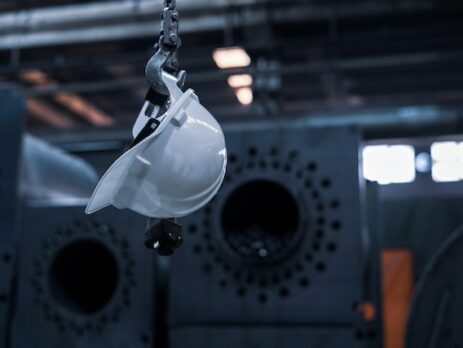How to Start a Safety Committee at Work (With Office Safety Checklist)
As an employer, ensuring that your employees work in a safe environment is one of your top priorities. The Occupational Safety and Health Administration (OSHA) recommends that companies establish a Workplace Safety Committee (WSC) to help keep their workplace safe.
But what is a WSC, and why is it important for your company to have one?
In this blog post, we’ll explore what a Workplace Safety Committee is, how it functions, and the benefits of having one in your workplace.
What is a Workplace Safety Committee?
A Workplace Safety Committee (WSC) is a group of employees who work together to identify, assess, and solve safety concerns in the workplace. The committee is made up of both management and staff members who meet regularly to discuss safety issues and work collaboratively to create solutions.
The composition of the committee should be representative of the wide range of job positions within a company.
WSC’s also have a designated leader who is responsible for overseeing the committee’s activities and ensuring that everyone is working towards the same goal.
What Does a Safety Committee Do?
A WSC’s primary responsibility is to help create a safe work environment.
This includes identifying and reducing hazards in the workplace, informing workers about potential hazards and their preventive measures, investigating accidents or incidents, and creating workplace safety policies.
They can also help improve employee engagement and morale by ensuring employees feel safe and comfortable in their work environment.
To get right into the nuts and bolts of things, one of the primary responsibilities of a safety committee is to create orientation and training programs for new employees. These programs should cover all safety procedures, emergency protocols, and equipment handling. All employees need to be properly trained on safety measures before they begin their jobs.
Safety committees must also conduct regular safety training for all employees to remind them of the safety guidelines and procedures. These training sessions should be interactive and engaging to keep employees interested. Your group might consider organizing various safety exercises, including fire drills, first-aid training, and emergency evacuation drills.
A safety committee can even work on increasing employee safety awareness to encourage alertness and responsibility towards safety issues from all employees. This awareness can be achieved in a variety of ways, such as through regular safety bulletins, posters, and newsletters.
At the end of the day, the committee needs to make sure that employees have a proper understanding of each danger they might encounter, and how to handle these dangers effectively.
Why Do You Need a Workplace Safety Committee?

An unsafe work environment can lead to accidents, injuries, and even deaths, which not only affects your employees but also the productivity and profitability of your company. And to make sure that safety standards are met and enforced, a workplace safety committee is crucial.
The safety committee helps identify hazards that may cause accidents in the workplace. By doing regular safety inspections and observations, the committee can detect risks and provide solutions for them.
The committee’s members are aware of workplace operations and know what to look for in identifying potential hazards. A well-informed safety committee can prevent potential injuries, save costs, and most importantly, save lives.
A workplace safety committee can also increase buy-in. When employees feel involved in safety procedures, they are more likely to comply, hence minimal workplace accidents. A safety committee is an excellent platform for encouraging employees to engage in the organization’s safety efforts.
A workplace accident comes with additional costs–direct and indirect–including lost productivity, medical bills, and legal fees. Implementing a safety committee can prevent accidents and injuries, subsequently saving the company enormous costs.
The proper identification of potential hazards, employee training, and compliance measures can significantly lower the probability of workplace injuries and accidents, making them an integral part of the safety committee’s daily activities.
How to Start a Safety Committee: A Step-by-Step Guide
The success of a safety committee largely depends on how it’s set up and managed. Here are some tips.
Assign a Point Person or Director
The first step to starting a safety committee is to assign a point person or a director. This person will be responsible for overseeing the committee, and ensuring that it stays on track to achieve its goals.
The director should be someone who has a good understanding of safety measures and the company culture, and can effectively communicate with all members of the committee.
Ensure Equal Representation
When selecting members to join the committee, ensure that you have equal representation from different departments. This will ensure that each department’s concerns are addressed, and that the committee has access to diverse perspectives.
You also may want to consider selecting members who have some level of authority or influence within their department to ensure the successful implementation of any proposed safety measures.
Have a Regular Meeting on the Calendar
Schedule regular meetings on the calendar. The frequency of the meetings can vary depending on the size and complexity of the organization, as well as the size of the committee. However, it’s recommended that these meetings occur at least once a month.
During these meetings, the committee members can report on progress, share concerns or issues, and propose solutions to any identified hazards.
Write a Mission Statement
Create a mission statement like this that clearly outlines the objectives of the committee. This mission statement should explain the goals and purpose of the committee. It should also define the roles and responsibilities of the committee members.
Make sure that the mission statement is communicated to all employees so that they understand what the committee is doing, why they’re doing it, and who to contact with any questions or concerns.
Get to Work
Once the committee has been formed, it’s time to get to work! Start by assessing the current safety measures in place and identifying any gaps or potential hazards.
Next, create a safety program that outlines the committee’s goals, strategies, and timelines for implementation. This program should be communicated to all employees to ensure that everyone is working towards the same objectives and has a clear understanding of how to keep themselves and their colleagues safe.
Provide the Committee With the Proper Resources
Make sure your committee has everything they need to be successful and productive. That might include training and awareness on office safety rules and regulations, as well as access to safety equipment and resources.
You should also provide the committee members with the tools they need to conduct safety inspections, such as checklists, manuals, and other reference materials.
Have Meeting Agendas and Documentation
Make sure there is always a designated person responsible for taking notes at every meeting. The meeting notes should include any decisions made, any action items assigned, and the date and time of the meeting.
This documentation is important, as it will help you track the progress of the committee and to make sure that recommendations are followed up on in a timely manner.
Rotate Roles and Membership
Image #3: https://unsplash.com/photos/seven-construction-workers-standing-on-white-field-x-ghf9LjrVg
Caption: Workplace safety committees should be clearly structured and organized.
Alt-Text: group of people overseeing work site
Switch up roles periodically. This means that members of the committee should be selected from different departments, and they should serve for a limited period. This way, the committee can benefit from new ideas and perspectives while maintaining a fresh approach to safety.
Look for Claim Trends
Claims are usually the starting point of the problem. Analyzing these claims helps you to identify trends and introduce preventive measures. The safety committee should have access to past accident reports, near misses, and incidents that are safety-related.
Before every safety committee meeting, review these records, and document your meeting discussion. This will help you track any incidents and make improvements where necessary.
Conduct Inspections
Safety committees should be on the lookout for unsafe work conditions and any potential hazards around the workplace. During these inspections, pay attention to things like safety equipment maintenance, lighting, exposed wiring, or blocked fire exits. Look for areas that require attention and document your inspection lists.
Eliminate Hazards
Once safety hazards have been identified, work as a team to develop a plan of action to eliminate them. The safety committee can identify high-priority areas and take necessary steps to address them first to reduce the risk of injury or accidents.
Some safety hazards can be quick and easy fixes, while some may require time and a significant level of involvement. The safety committee should monitor the progress of the actions taken to eliminate these hazards.
Recommend Trainings
Every workplace has different safety requirements that employees need to adhere to.
Conduct training sessions to educate your staff on various safety procedures and hazards of the job. The safety committee should assess the company’s needs and recommend training that would benefit them.
The training program should include standard safety procedures, emergency preparedness, hazardous material handling, and the proper use of personal protective equipment (PPE).
Avoid These Common Mistakes
Starting a workplace safety committee is a great step in ensuring the safety of employees and fostering a safe work environment, but it is not always as simple as it seems.
Putting together a team to spearhead workplace safety can be more of a challenge than initially anticipated – here are some potential issues you’ll want to work hard to avoid.
1. Undefined or Poorly Defined Roles
One of the most common mistakes made when starting a safety committee is undefined roles. It is essential to have a well-structured safety committee with a clear purpose and knowledgeable members who are aware of their responsibilities.
A written agreement or mission statement that outlines the committee’s functions and member responsibilities can go a long way in ensuring the committee meets regulatory requirements.
2. Lack of Training
Another common mistake made is a lack of training. Safety representatives should be knowledgeable about safety procedures and standards to communicate the importance and urgency of safety to employees.
Provide training to members of the safety committee on a regular basis to make sure they are equipped with the information and skills required to keep the workplace safe.
3. Insufficient Budget
Starting a safety committee requires funding, and a lack of budget can impact its effectiveness. Limited financial resources can limit the aid available to employees, and as a result, the safety committee may be ineffective.
Make sure the committee’s budgetary needs are met so that employees are adequately taken care of in case of emergencies, and the committee can carry out its functions to the fullest extent possible.
4. Inadequate Size
A safety committee that is too small will not be able to address all areas of safety adequately, while a committee that is too large may have difficulty functioning effectively.
Make sure your safety committee is well-sized and has the skills and experience required to ensure every area of safety is adequately covered.
5. Lack of Formal Meeting Agendas
Committee meetings should have a formal agenda. A clear agenda will ensure that each meeting is productive, efficient, and focused.
Appoint a leader or chairperson who will send out the agenda before the meeting – that way, all members know what to expect and can prepare for the meeting ahead of time.
A Helpful Office Safety Checklist
Each workplace will vary in terms of what kinds of safety protocols need to be place. However, there are some elements (like fire preparedness) that should be included across the board.
Here are a few things to keep in mind as you create a safety committee (and plan!) for your workplace:
- Fire safety equipment and procedures: Your office should have smoke detectors, fire extinguishers, fire alarms, and sprinkler systems installed to aid in case of fire emergencies. It is also essential to have safety personnel trained in handling fires. Regular fire drills should be conducted to prepare your employees in responding to fire emergencies.
- Ergonomics: To avoid workplace accidents, the office furniture, layout, and lighting should match the natural form of your body. Customized ergonomic furniture and workstation design can help prevent injuries and minimize discomforts such as eye strain, neck, and back pains.
- Electrical safety measures: All electrical components should be inspected regularly, and employees should be trained on how to use them safely. Make sure that all cords and wires are properly grounded and protected to prevent electrical hazards and tripping incidents.
- Communication protocols: Employees should be aware of the procedures and be able to communicate them calmly and efficiently. Emergency numbers should be visible, and everyone in the office should know where to find the first aid kit.
- Housekeeping practices: Keeping the office clean and organized helps minimize clutter and potential hazards. Encourage employees to clean up after themselves, make sure the workstations are free from obstructions, and keep walkways clear. A clutter-free workspace reduces the chance of accidents, trips, and falls.
Here’s another sample checklist you might be able to use as inspiration when you’re creating your own.
Final Thoughts
Creating a safety committee is an important step towards ensuring the safety of your employees.
By following these simple steps, you can establish a committee that is effective and successful in identifying and mitigating potential safety hazards.












